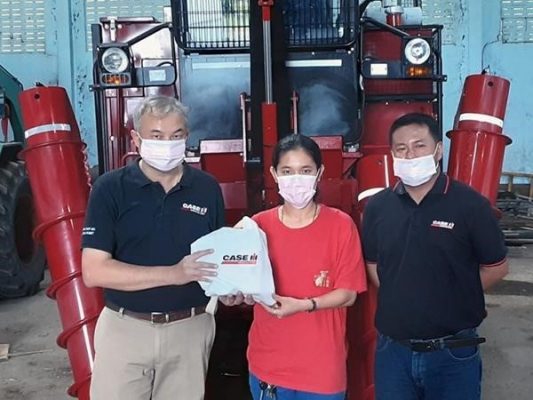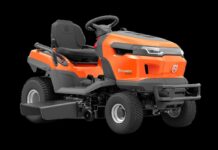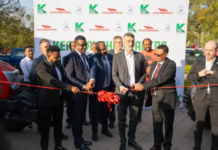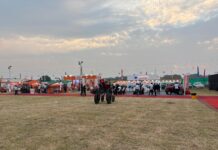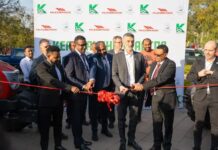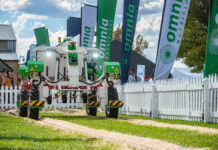In celebration of the recent global event ‘Day of Rural Women’, Case IH spoke with some pioneering female sugarcane farmers in Thailand.
Austoft 4000 solves labor issues in Suphanburi
Khun Arpon Jiakwattana is a second-generation sugarcane farm manager in Suphanburi, Thailand, one of a growing number of women taking on such a role. From the small family farm she grew up on, Arpon now farms 400 rai (64Ha) and is one of the local sugar mill’s largest suppliers. Working in cooperation with 20 local farmers, she sends over 6000 tonnes of sugarcane to mill every season.
For over 30 years, the farm has relied on the same group of labourers to harvest the crop, however as more people retire from the profession, in recent years it has become increasingly difficult to recruit the 20 labourers required for harvest. Arpon found the answer with Case IH.
The decision to move to mechanised harvesting was not made overnight. After many consultations with the sugar mill and her local Case IH dealer, Arpon believed that a Case IH Austoft 4000 sugarcane harvester with FPT engine was the right choice for her operation.
Arpon already understood that mechanical harvesters such as the Austoft 4000 cut significantly more cane per hour than manual harvesting, however she acknowledges that the low running costs and high productivity of the Austoft 4000 are attractive benefits that set this machine apart from other brands.
In a productivity test in Yunan, China in 2019, the Austoft 4000 harvested 412 tonnes of sugarcane in 10 hours using an average of 0.64 litres of fuel per tonne of harvested cane. When this productivity is considered alongside the revenue generated by supplying 6000 tonnes of cane to the sugar mill, it makes the Austoft 4000 an affordable harvester to own and operate in the long term.
According to Arpon, “This is the most valuable piece of machinery that I have ever purchased but I know that it will allow me to expand my business without breaking the bank. It’s a great fit for a medium-sized sugarcane farmer like me.”
When asked what attracted her to Case IH, Arpon’s answer was simple; “I first saw the Austoft 8010 operating in Thailand and I was impressed by its quality and performance so I knew that Case IH products wouldn’t let me down. Furthermore, the comprehensive warranty and aftersales support from my local dealer gave me confidence to choose Case IH over any other brand.”
Arpon has also benefitted from the technical and operator training courses provided by CNH Industrial (Thailand) Ltd, the distributor of Case IH in Thailand.
Arpon isn’t fazed about being one of the few female sugarcane harvester owners in Thailand.
“In the past to be a farmer you needed to be strong as most of the work was physical and in the field,” she said. “Now being a smart farmer is about good management and business knowledge and I believe this will help attract more rural women to agriculture.”
Impressive productivity for Austoft 8010 in Kanchanaburi
Kanchanaburi province is home to Mrs Duangdao Boonkam, a sugarcane farmer for over thirty years. With 700 Rai (112Ha) of cane plantation, she annually delivers a total of 20,000 tonnes to two local sugar mills. Since starting the plantation, Duangdao has invested heavily in the business and has recently finished installing an irrigation system on a 200 Rai (32Ha) block of land which has been planted in such a way to accommodate her latest purchase, an Austoft 8010 sugarcane harvester.
Having a permanent staff of 18 employees means that Duangdao is already very familiar with the day-to-day management of a large farming enterprise, but that doesn’t mean that every day isn’t without its challenges.
“One of the hardest things to manage on a sugar estate is labour,” said Duangdao. “When we were manually cutting, I had over 30 extra labourers working here who all needed managing in order to reach daily production targets. Now with my Austoft 8010 sugarcane harvester, I only employ 10 manual labourers. My Austoft 8010 is much easier to manage than the workers and it delivers better results, too!”
Duangdao’s decision to move into mechanical harvesting came about after a discussion with a cane-growing friend who conducted in-depth research before making his choice and purchasing a Case IH Austoft harvester.
“Having the ability to talk to people I trust about the choices that they have made for their businesses has allowed me to be confident that I am making the right choices,” said Duangdao. “Like my friends, the decision to purchase an Austoft 8010 has not failed me yet.”
After purchasing the harvester, Case IH offered Duangdao and her team a comprehensive introduction to the machine, and company staff were on hand as the Austoft 8010 went into the field for the first time. This commitment to all customers is in the DNA of Case IH, who has been providing harvesting solutions to farmers around the world for over 175 years.
In the field, the Case IH Ausotft 8010 didn’t disappoint Duangdao who now can take advantage of local government incentives for harvesting green, instead of burned, cane.
“We have noticed significant improvements on productivity compared to manual harvesting,” Duangdao said. “Not only can we cut green cane, which leaves more organic matter in the field, but the harvester picks up fallen cane very well and the in-field losses are lower than with manual labourers.”
Duangdao says the farm has had its most impressive results in a new 32Ha field that was planted specifically for the sugarcane harvester. “Our newest sugarcane field has been planted with enough space to move the Austoft 8010 at the headlands and we have found that productivity is very high and the time we spent to prepare the field has been well worth it during harvest time.”
Looking back at 30 years of managing a sugarcane farm, Duangdao is keen to point out how she has always been an early adopter of new technology.
“When I started the business, we were hand-harvesting and hand-loading trucks, then I purchased a sugarcane loader which made harvesting faster. Now I’ve moved onto a sugarcane harvester which opens up far more opportunities to increase production and decrease costs,” she said.
“I’m proud to say that I’ve never wanted to follow the crowd and I’m happy to stand out and show what I can do.” As Thailand looks toward the 2020/2021 season, Duangdao still has big plans for her farm. “I’d like to invest in side-tipping bins and tractors so that I can remove the trucks from the field, reducing compaction and increasing turn-around times. My plan is also to gradually adapt all of the fields to be suitable for the sugarcane harvester to maximise the productivity of my most valuable tool.”


